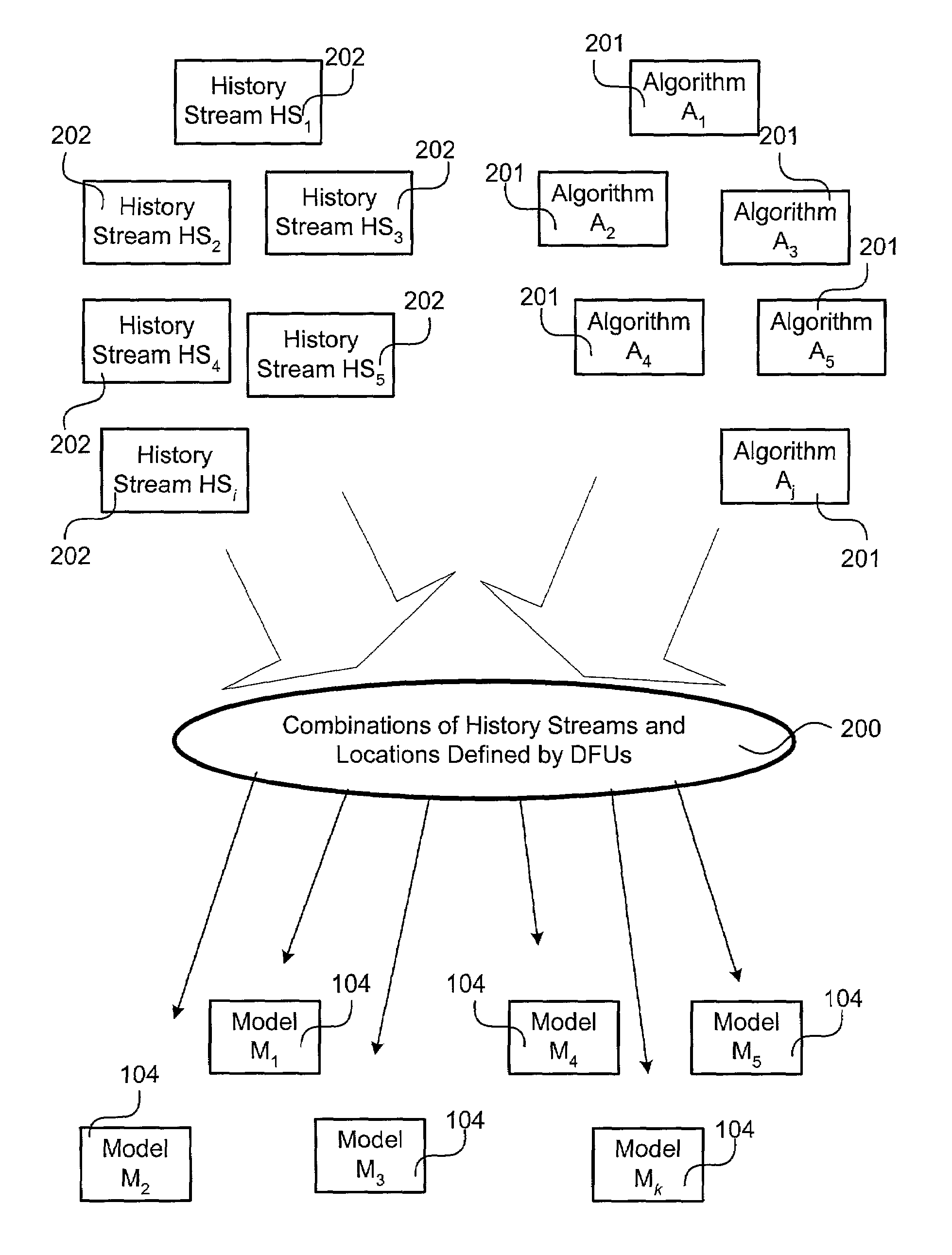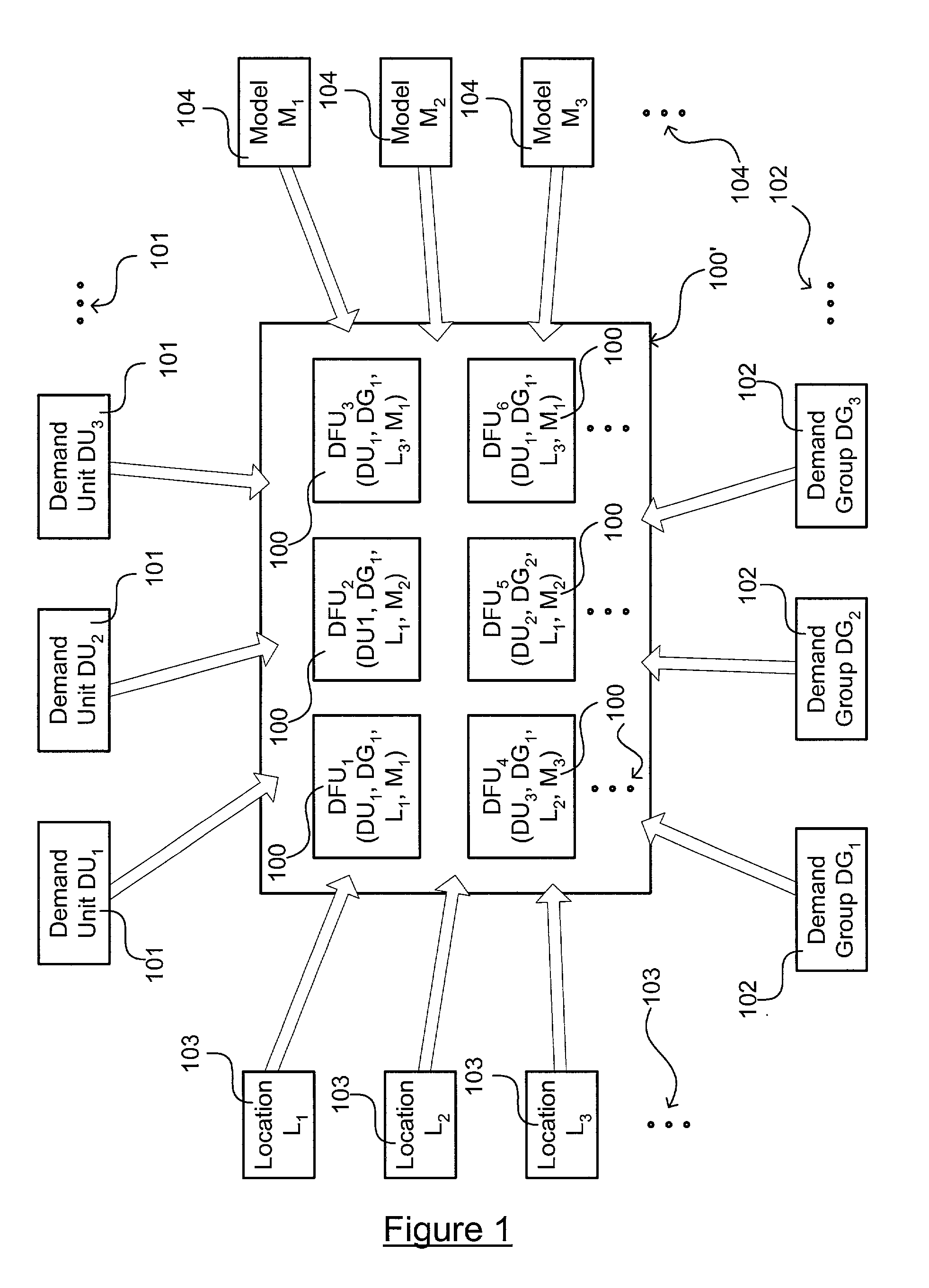Supply chain demand forecasting and planning
a supply chain and demand technology, applied in the field of systems and methods for supply chain planning and demand forecasting, can solve problems such as excessive expediting costs, loss of market share, and loss of profits
- Summary
- Abstract
- Description
- Claims
- Application Information
AI Technical Summary
Benefits of technology
Problems solved by technology
Method used
Image
Examples
Embodiment Construction
[0040]Reference is now made in detail to the preferred embodiment of the present invention, examples of which are illustrated in the accompanying drawings.
[0041]Generally for a given seller organization that operates as a seller or supplier, demand forecasting must be performed on a recurring basis for each item in each market. Since the demand for an item varies according to the market and time frame in which it is selling, demand forecasts according to the present invention are identified according to its demand forecasting unit (“DFU”). As depicted in FIG. 1, a DFU 100 according to the present invention is a mechanism for categorizing each demand forecast according to four primary types of information. Each DFU 100 categorizes a forecast according to one of a plurality of a demand units 101, one of a plurality of demand groups 102, one of a plurality of locations 103, and one of a plurality of models 104. A demand unit is a unique product identifier code that functions in a manne...
PUM
 Login to View More
Login to View More Abstract
Description
Claims
Application Information
 Login to View More
Login to View More - R&D
- Intellectual Property
- Life Sciences
- Materials
- Tech Scout
- Unparalleled Data Quality
- Higher Quality Content
- 60% Fewer Hallucinations
Browse by: Latest US Patents, China's latest patents, Technical Efficacy Thesaurus, Application Domain, Technology Topic, Popular Technical Reports.
© 2025 PatSnap. All rights reserved.Legal|Privacy policy|Modern Slavery Act Transparency Statement|Sitemap|About US| Contact US: help@patsnap.com



